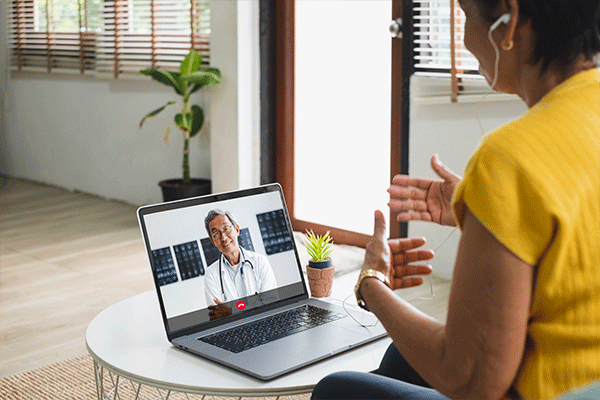OKLAHOMA CITY – A proposal that would pay doctors the same amount of money for telehealth visits as in-person consultations has headed to the governor for his signature.
Senate Bill 674 was approved by the Senate on April 29 and sent to Gov. Kevin Stitt May 3. The use of telemedicine exploded during the peak of the COVID-19 pandemic as medical facilities sought ways to prevent exposure to the disease.
Rep. Mark McEntire, R- Duncan, was the House author of the legislation.
“Assuring that all insurers equally cover telehealth services is something that will benefit patients and health care providers across our state,” he said. “We learned during the pandemic that telehealth actually increased the frequency of people consulting with their doctors, and we’re hopeful that will lead to better health outcomes, which would be of great benefit to all of us.”
SoonerCare members completed 11,941 telehealth visits in 2019. That statistic rose to 333,415 visits in 2020, an increase of 2,726% in just one year, according to information released by the state Senate office.
Healthy Minds Policy Initiative pushed the measure from the time it was introduced, said Zack Stoycoff, the group’s executive director. Healthy Minds focuses on mental health for Oklahomans, but recognized telehealth was helpful for many other people with physical needs.
“Telehealth calls to the Department of Mental Health rose 900 percent,” he said. “We expect telehealth utilization will remain high. It’s been a lifeline for rural Oklahoma. Psychiatrists will be practicing in every county when 674 is signed.”
Although telehealth was in use before COVID, the pandemic pushed its usage forward a decade, Stoycoff said.
“This (SB 647) is an opportunity to continue to be a national leader in telehealth,” he said. “Everyone is seeing telehealth as the future.”
State Senator Jessica Garvin, R-Duncan, said she’s hopeful the governor signs the legislation that would make the payment parity a permanent fixture in the healthcare system.
“As someone in the healthcare industry, I was happy to see SB 674 go to the governor,” she said. “Historically, insurance companies have paid doctors less for telemedicine visits versus in-person office visits for the same services. Governor Stitt issued an executive order calling for payment parity last year, but he’s announced that he’ll be ending the state of emergency soon. SB 674 will ensure doctors are paid the same regardless if they’re seeing patients virtually or in person. This is great news because the use of telemedicine has skyrocketed.”
Sen. Greg McCortney, R-Ada, was the principal Senate author of SB 674. The payment parity and access to healthcare for rural residents played a critical role in pushing the legislation, he said.
“SB 674 will help us capture the momentum we’ve seen this past year and encourage more and better use of telemedicine,” McCortney said. “It means employees can take less time off work for medical appointments, and it helps seniors who may no longer drive or have other mobility issues — it can be a great convenience for just about anyone, and it helps provide greater access to care in our rural communities.”
The use of telemedicine or telehealth is becoming integrated into the ongoing operations of hospitals, specialty departments, home health agencies and private physicians, according to the Oklahoma Hospital Association. All 77 Oklahoma counties have telehealth. More than 400 medical facilities in Oklahoma send or receive telehealth services, the OHA reported.
Virtual visits can provide health services online and help in the management of chronic diseases, including diabetes, asthma, hypertension, heart failure, HIV and high-risk pregnancies.


